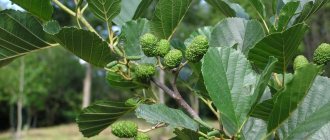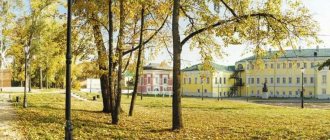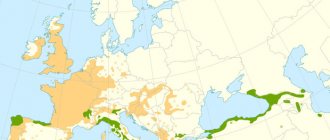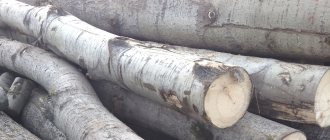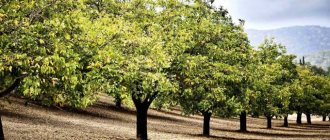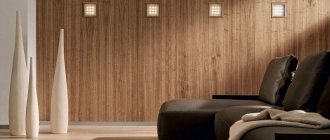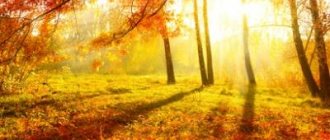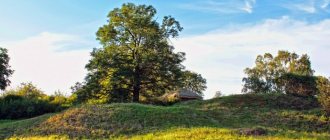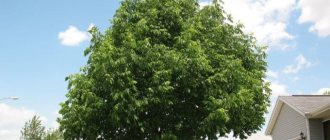Everyone knows what alder looks like. Unprepossessing in appearance, but it is a real harbinger of the coming of spring. When all the trees still have bare black trunks, causing melancholy and sadness, the alder is already blooming with might and main. It is with flowering that the life cycle of this tree begins, then young leaves begin to appear. Alder is a deciduous tree of the birch family. Depending on the location, it may be in the form of a tree or bush.
What does alder look like?
This tree has one distinctive detail - cone-shaped earrings. In spring, they are usually green, soft and similar to birch trees, but closer to winter they become hard and change color to brown.
The perennial trunk is covered with smooth, dark-colored bark. The plant has a highly developed rhizome. It is located quite close to the soil surface, so the perennial may be somewhat unstable in strong gusts of wind. Given this point, it is not recommended to plant alder under a residential window.
The leaves are oval in shape with jagged edges. Its surface is smooth, but wrinkles can be felt closer to the center. They are attached to small petioles and arranged in a regular order.
Beauty with brown earrings
Alder, a tree whose description allows us to highlight its main characteristics, is an equally popular species of the birch family. Gray alder can reach a height of up to 16 meters. Therefore, it is planted to secure ravines and coastal areas. Propagated by root suckers, cuttings and seeds.
What does alder look like? The tree has a gray, slightly curved trunk, gray leaves, and brown catkins. These are the main characteristics by which alder can be distinguished from other plants. Frost resistance and the ability to grow on depleted soils and wetlands are the advantages that characterize the alder tree.
A description and photo of the green beauty, an integral part of the natural complex, will allow you to get to know her better.
Types of alder
Currently, scientists have identified about 29 species of this plant. But there are no exact values, since the plant tends to change, forming new hybrid species.
Black alder
This species grows in Western Asia and North Africa, and is also found in Europe. This tree can grow up to 35 m in height and can reach 90 cm in diameter. The branches of the tree are perpendicular, so the crown of the tree has a pyramidal shape.
The active vegetative process begins when the tree reaches 10 years of age. The lifespan of the plant can reach up to 100 years.
The tree has a well-developed branched rhizome. As a rule, it is located close to the soil surface.
- The foliage is rounded with small veins measuring about 7 cm.
- With the onset of spring, yellowish-brown catkins bloom on the branches.
- Their length can reach 8 cm, and their diameter reaches 2 cm.
Closer to the cold season, they change: they acquire a brown color and become hard and pine-like.
Red alder
This perennial attracts attention with its dark red color. Trees can grow up to 20 m in height. The bark is smooth, gray-brown in color. The bushes have dense foliage.
- The leaves are pointed, oblong in shape. They are usually a deep red color.
- Due to this, the shrub is distinguished by its decorative effect.
- Just like other species, alder has cones. They are small and measure about 2.5 cm.
Gray alder
The plant is distinguished by its vitality, as well as its ability to adapt to any conditions. It has a narrow, curved trunk. The bark has a heterogeneous structure, with protrusions and is sticky to the touch.
- In young trees, the vegetative process is quite active.
- The tree does not stop growing new, young shoots.
- The leaves of gray alder are smooth on the outside and fleecy on the inside.
- Their size usually reaches 10 cm. Earrings bloom before the leaves.
As a rule, this happens at the end of March, at the beginning of April.
Fetus
In female inflorescences, after pollination, the scales close together, then green cones are formed from them, which by autumn gradually become woody and turn into infructescences that overwinter on the tree. In spring, the fruits spill out and are spread everywhere with the help of the wind and spring waters.
The fruit is a flat, single-seeded nut. The cone grows up to 10-15 millimeters in length and up to 8 mm in width. They usually ripen in October, and open only in February-March. Then the alder seeds begin to scatter.
Use in folk medicine
All parts of the tree have medicinal properties. The cones begin to be harvested in late autumn, when they are fully ripe. They are cut and dried at room temperature.
When properly prepared, the fruits should have an astringent taste and be dark in color.
- Leaves begin to be harvested in early summer. They contain essential oils, tannins and organic acids. They are used as a hemostatic, diaphoretic and antimicrobial agent.
- A decoction of alder fruits is used for ailments of the gastrointestinal tract, allergies and rheumatism. The infusion helps with colitis and digestive disorders, for cleansing the skin and healing wounds.
Alder has proven itself well as an expectorant for bronchitis and tracheitis, antipyretic and diaphoretic for colds.
Preparations made from alder are usually safe for human health. Contraindications include individual intolerance, and an overdose can have a negative impact on health.
Alder in construction
Wood can be used either independently or as an additional component in the manufacture of particle boards and plywood. Each type of alder has individual characteristics. Thanks to this, it can be used in various fields.
The advantages of building materials made from this type of wood include:
- Good resistance to high temperatures.
- Environmentally friendly.
- Moisture-absorbing properties.
- Condensation does not accumulate on the surface of the wood.
- Low thermal conductivity.
Alder is often chosen as a building material for making saunas. The wood burns well, but at the same time does not smoke much. When wood smolders, a pleasant aroma spreads.
Building materials made from alder are distinguished by their lightness, strength and availability, as well as their resistance to various deformations. Therefore, the material is often used for the manufacture of wells and in the construction of ships. Alder is often used in the woodworking and furniture industries.
Black alder is used in furniture production and various carpentry works.
This type is distinguished by its original wood pattern. Due to this, black alder is often used as a decorative material in the production of various interior items and finishing elements of cabinet furniture.
Red alder is used in the manufacture of musical instruments. Alder is often used to make window frames and doors. Its wood has antiseptic and antibactericidal properties and is absolutely safe for children.
When burned, gray alder wood emits a pleasant and unique aroma, which is why it is used to light fires.
Color shades and texture of alder wood
If you look at a cut of freshly cut alder, you will notice that its color is almost white. After the alder lies in the air for a while in this form, its color begins to change. At first, sawn and prepared wood turns slightly pink, then it acquires different colors of red, ranging from the lightest, yellowish to deep brown.
The color change occurs due to the release of polyphenols, which in air are converted into a coloring pigment - phlobafen. After alder wood has undergone the correct, standard drying process, its color changes to chocolate.
Alder wood is valued by specialists for its homogeneous structure; it does not have a pronounced core; the annual rings on the cut are practically not separated from each other by any visible effect. The rays emanating from the middle of the tree are also faintly noticeable.
Due to the softness of the wood and its special absorbent parameters, blanks from this plant can be painted in any color shades. With proper processing and preparation of wood, craftsmen receive unique wooden crafts and products that, in their external characteristics, completely imitate expensive types of wood.
